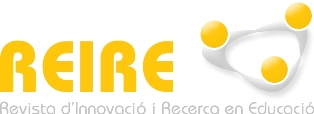The acquisition of self-regulated learning competences. Analysis of their conception and learning in different Higher Education courses.
DOI:
https://doi.org/10.1344/reire2009.2.2223Keywords:
Enseñanza de competencias, autorregulación del aprendizaje, perspectiva socio-constructivista, calidad de la innovación, enseñanza universitariaAbstract
This is a research about the competence of self-regulated learning in university students. It is based in a socio-constructivist theory and according to the phases of the acquisition of the self-regulated learning proposed by Zimmerman (2000). We analyze the dimensions that are specifically related with planning individual and group learning. We studied four proposals for educational innovation on teaching self-regulation learning. There were 386 students and 9 teachers of the University of Barcelona involved, belonging to three different studies (Biology, Education and Psychology) and four different subjects, during the academic year 2007-2008. The results show, overall, that students understand the planning as a formal activity, exclusively located at the beginning of the learning process; they are limiting its role to the organization of work, and they don’t relate their use to management to build knowledge.References
Billon, M. y Jano, M. (2008). Prácticas Docentes en el Marco del Espacio Europeo de Educación Superior. Madrid: Decanato de la Facultad de Ciencias Económicas y Empresariales de la Universidad Autónoma de Madrid.
Coll, C. (2001). Constructivismo y educación: la concepción constructivista de la enseñanza y del aprendizaje. En C. Coll; J. Palacios y A. Marchesi (comps.) Desarrollo psicológico y educación. 2. Psicología de la educación escolar. Madrid: Alianza, pp. 157-188.
Dabbagh, N. y Kitsantas, A. (2004). Supporting Self-Regulation in Student-Centered Web-Based Learning Environments. International Journal on E-Learning. 3 (1), 40-47.
Mauri, T., Coll, C. y Onrubia, J. (2007). La evaluación de la calidad de los procesos de innovación docente universitaria. Una perspectiva constructivista. Red U. Revista de Docencia Universitaria, 1. (Consulta: abril de 2009 en: http://www.redu.um.es/Red_U/1/).
Mauri, T., Colomina, R. y De Gispert, I. (2009). Diseño de propuestas docentes en TIC en la enseñanza superior: nuevos retos y principios de calidad desde una perspectiva socioconstructivista. Revista de Educación, 348, 377-399.
Perrenoud, P. (2004). Diez nuevas competencias para enseñar. Invitación al viaje. Barcelona: Graó.
Perry, N.E., Hutchinson, L. y Thauberger, C. (2008). Talking about teaching self-regulated learning: scaffolding student teacher’s development and use of practices that promote self-regulated learning. International Journal of Educational Research, 47, 97-108.
Perry, N.E., Vandekamp, K.O., Mercer, L.K. y Nordby, C.J. (2002). Investigating teacher-student interactions that foster self-regulated learning. Educational psychologist, 37, (1) 5-15.
Pintrich, P.R. y De Groot, E.V. (1990). Motivational and Self-Regulated Learning Components of Classroom Academic Performance. Journal of Educational Psychology, 82 (1), 33-40.
Schunk, D.H. (2005). Commentary on self-regulation in school contexts. Learning and Instruction, 15, 173-177.
Schunk, D.H. y Zimmerman, B. J. (2003). Social origins of self-regulatory competence. Educational psychologist, 32, 195-208.
Valle, A., Cabanach, R. G., Rodríguez, S., Núñez, J.C. y González-Pienda, J.A. (2006). Metas académicas, estrategias cognitivas y estrategias de autorregulación del estudio. Psicothema, 18, (2)165-170.
Yin, R.K. (1991). Case study research. Design and Methods. London: Sage Publications.
Zimmerman, B.J. (2000). Attainment of self-regulation: A social cognitive perspective. En M. Boekaerts, P.R. Pintrich, & M. Zeidner (Eds.), Handbook of self-regulation. San Diego, CA: Academic Press, pp. 13-39.
Downloads
Published
How to Cite
Issue
Section
License
Authors keep authorship rights and confer to REIRE the rights of article’s first publication.
All the contents included into REIRE Revista d’innovació i Recerca en Educació are under Creative Commons 4.0 International license attribution, which allows the article’s reproduction, distribution and public communication, whenever authorship and the journal’s title is quoted.







